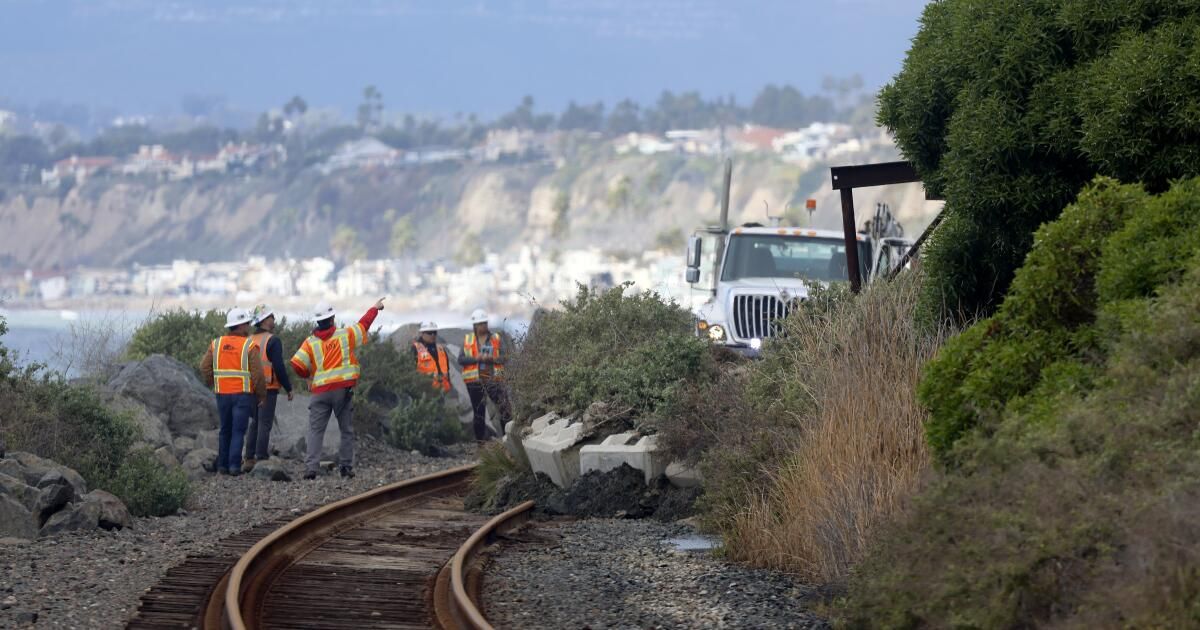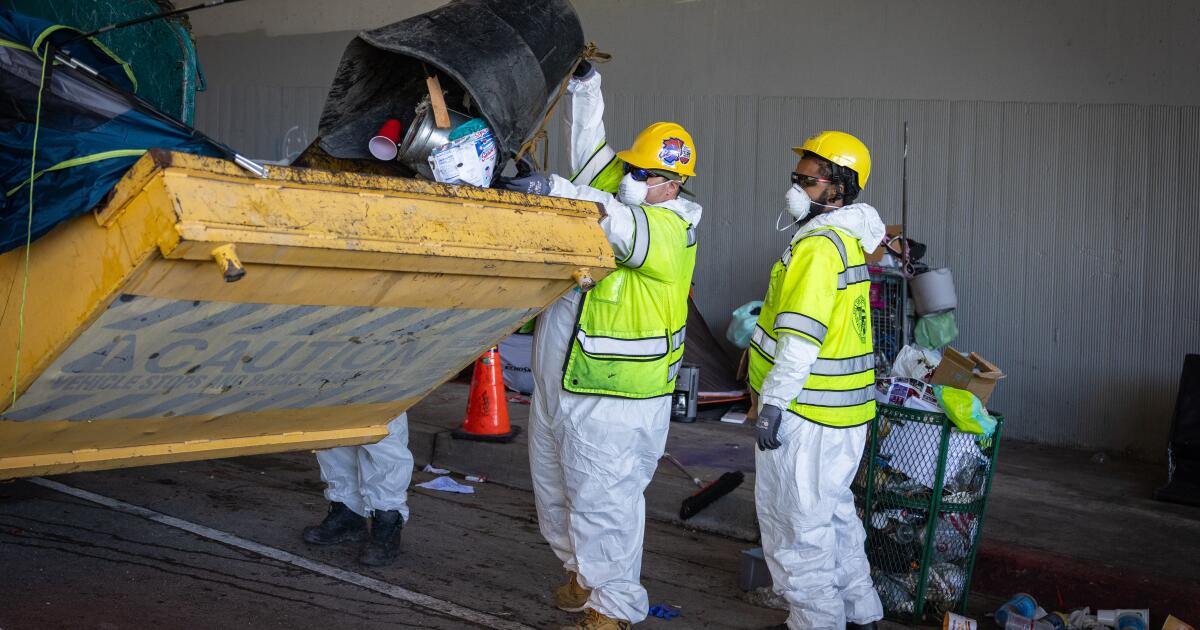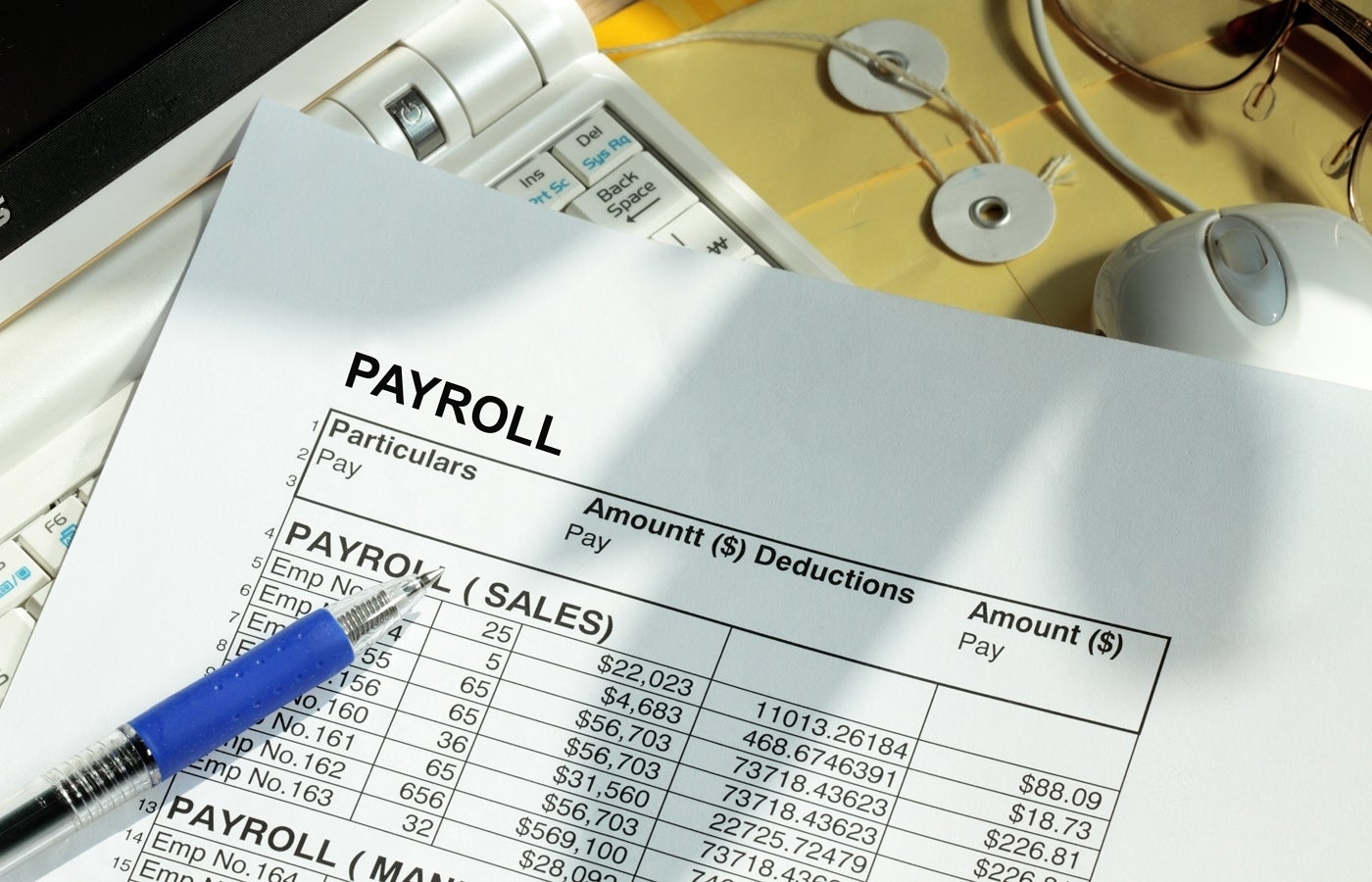The country's second-busiest intercity passenger train line is partially closed. Again.
A landslide in San Clemente indefinitely halted rail service between Orange and San Diego counties, a key segment of the 351-mile coastal rail corridor that runs between San Luis Obispo, Los Angeles and San Diego.
This is the fifth time in three years that train service has been interrupted by hillside erosion in the area, disrupting people's movements, long-distance travel and the movement of goods along the area. important route. The track was closed to Amtrak's Pacific Surfliner and Metrolink trains for six months last year. And as climate change fuels more intense storms, coastal erosion and rising sea levels, ocean-side rail line closures are expected to become commonplace.
It's time for Californians and transportation officials to face the inevitable reality: Saving the coastline means moving it away from the unstable land at the ocean's edge.
State and local officials rushed to declare a state of emergency this month, releasing up to $10 million in funds to stabilize the slope. But that's a temporary fix. There is much less momentum and progress toward a necessary, permanent solution, which will likely include moving parts of the tracks inland, away from the ruined coast.
Legislators, along with transportation and the environment. defenders, They warn that the Lossan rail corridor, which means Los Angeles-San Diego-San Luis Obispo, is facing an existential crisis. Ridership has dropped to 4 million passengers from a high of 8 million before the pandemic, and growing suspensions of the service are undermining its reliability and convenience as an alternative to driving. The line is also a crucial freight corridor, moving $1 billion worth of goods each year and connecting military bases in the state, including Vandenberg Space Force Base and Camp Pendleton.
Last month, lawmakers sent a letter to Governor Gavin Newsom's administration urging the California State Transportation Agency to take the lead in managing the rail line and chart a path forward.
The rail line's success has been hampered by a lack of clear leadership, shared by five public transit agencies and two private freight railroads, all of which have different priorities. Additionally, the many cities and private property owners adjacent to the rail line have their own opinions about what should be done and who should pay for it. There is no single global authority that puts what is good for California's future above parochial interests.
“There is a crisis along this rail line and it has not received the attention it deserves,” said Sen. Catherine Blakespear (D-Encinitas), chairwoman of a senate subcommittee looking for how to fix the ailing railway line. “I don't just want it to not fail. “I want it to prosper.”
All Californians should want that too. There is tremendous potential. Just look at Amtrak service between Washington, DC and Boston. It had 12 million passenger trips last year and is considered such an essential economic driver for the region that the The Biden administration granted $16.4 billion to finance 25 projects on the route.
There are more than 14 million residents in the region served by the Coastal Rail Line, many of whom would enjoy the opportunity to take a fast, comfortable train between, say, Los Angeles and San Diego, rather than having to deal with traffic. of Interstate 5. But prolonged track closures, unreliable and infrequent service, especially outside of daily travel hours, disconnected ticketing systems and a lack of transit connections at stations make the train hard sell in southern California.
Making the coastal rail corridor safe and successful will not be cheap, easy or quick. It could cost more than $5 billion to relocate parts of Orange County's rail line inland and $4 billion to move tracks from eroding cliffs in Del Mar. Additional track and infrastructure projects are needed so trains can operate more frequency and passengers can transfer without problems. from train to train.
The work will take decades. That's why it's important to accelerate planning and set priorities now. We know what climate change will affect the coast in the coming years. And we know what we have to do to ensure California doesn't lose this essential rail connection.












